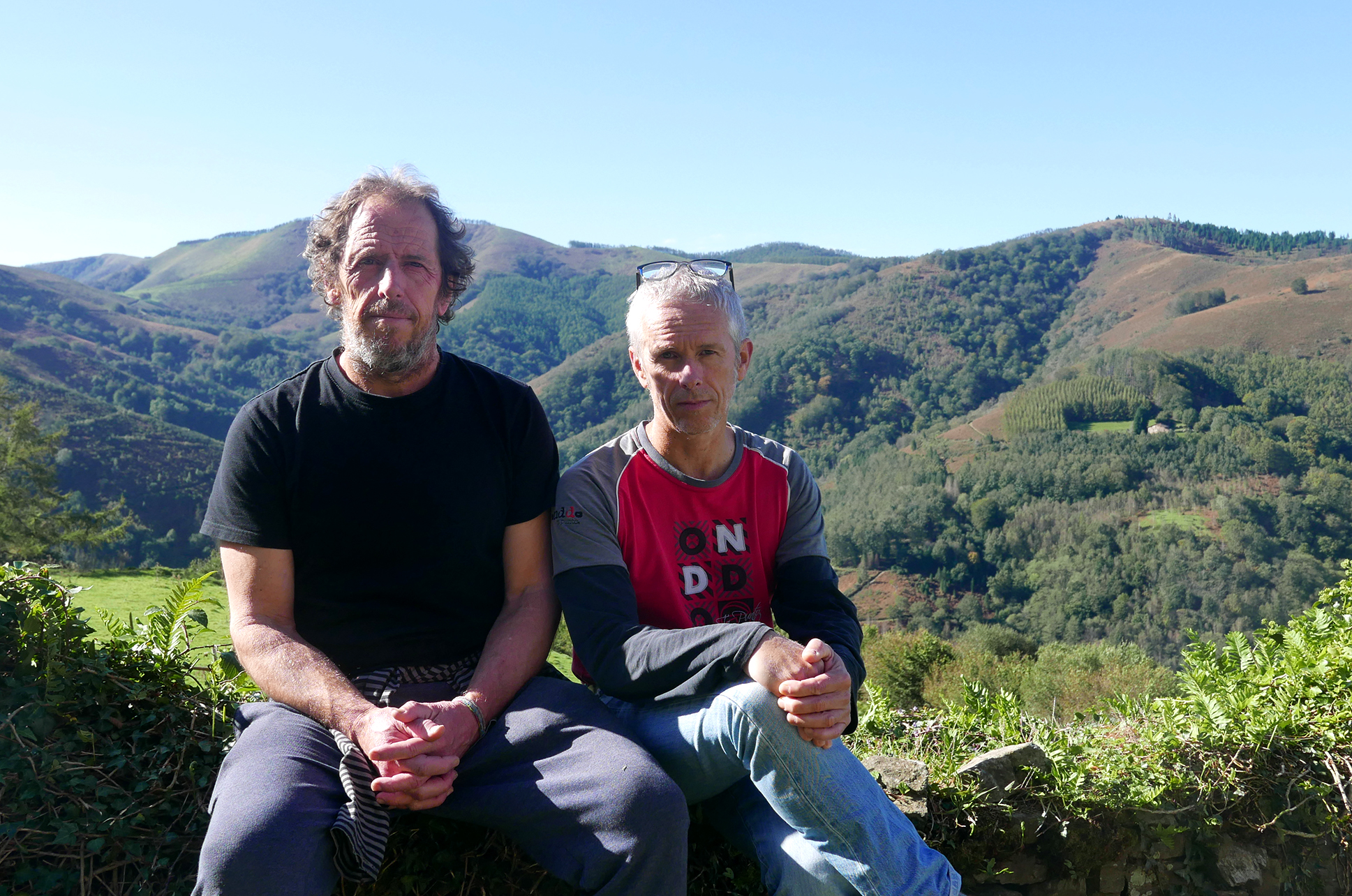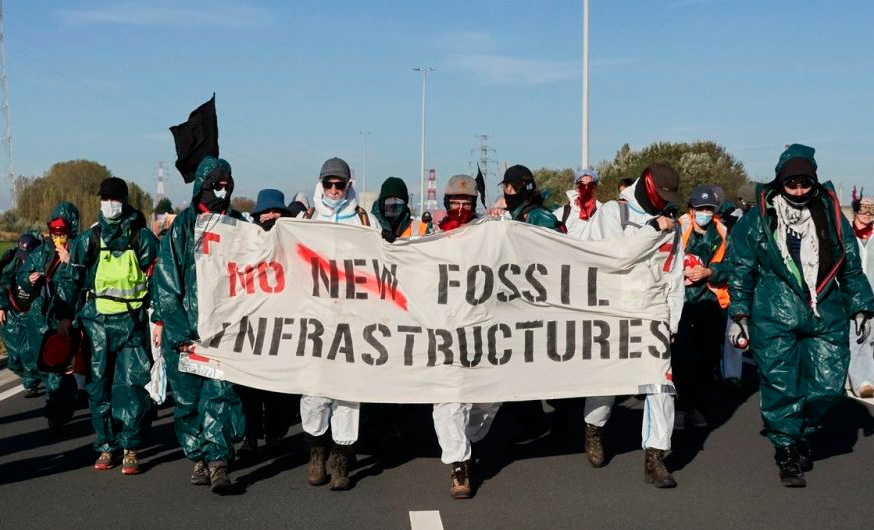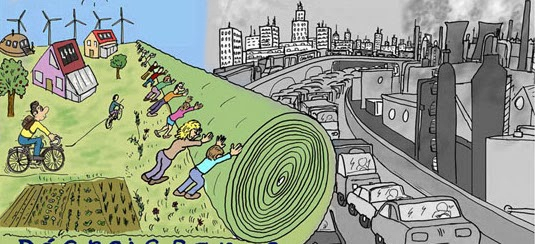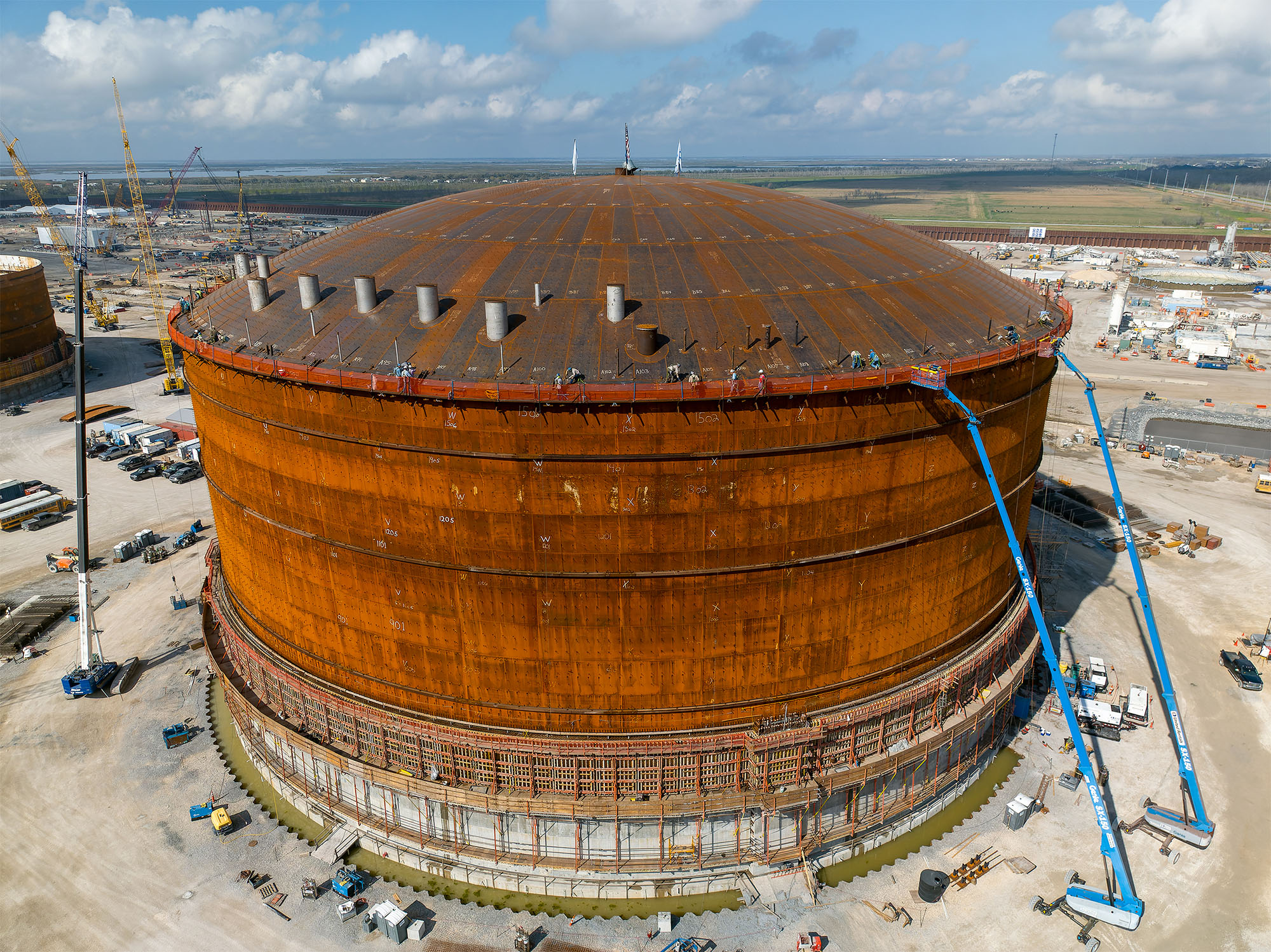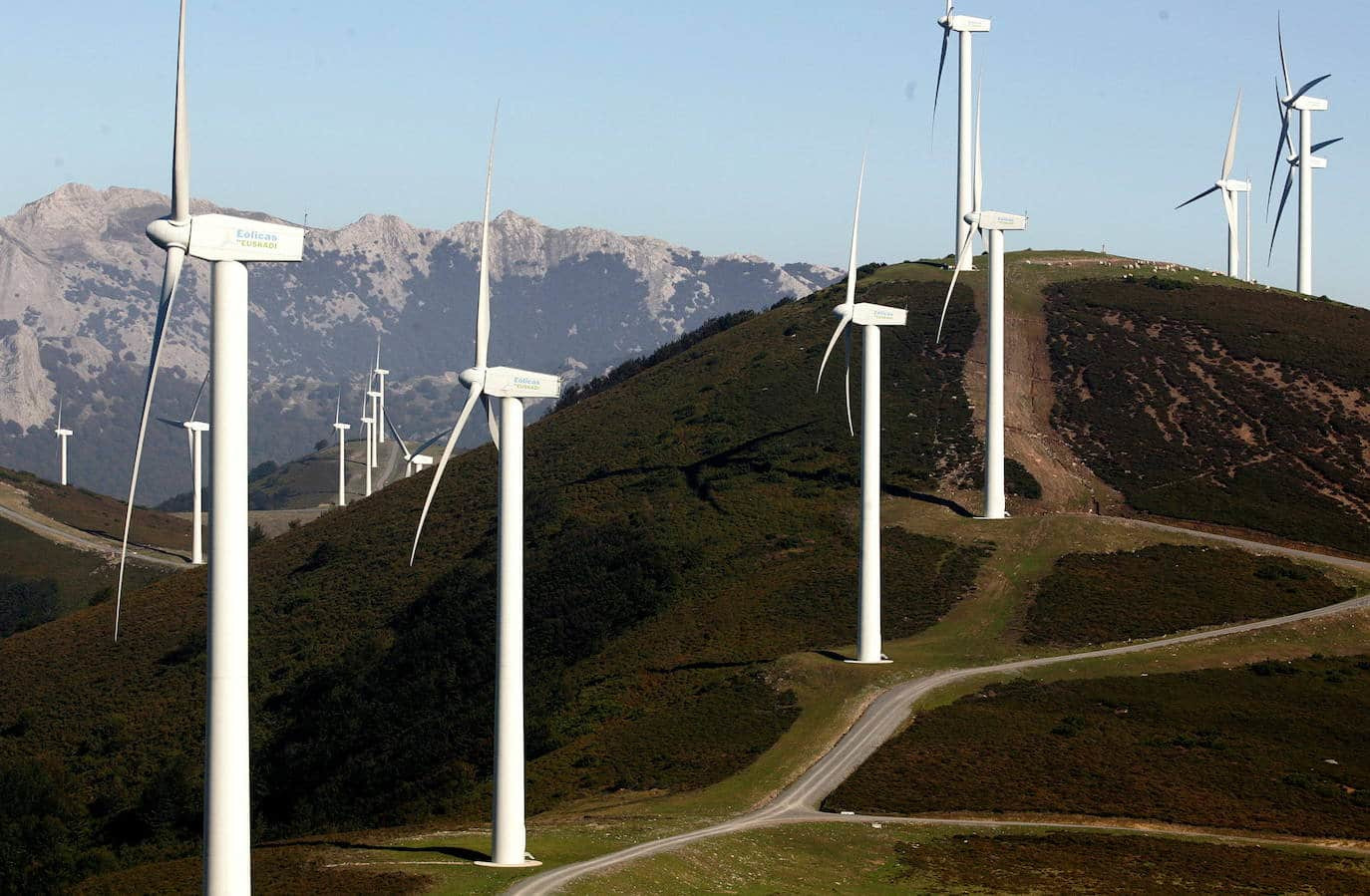In the Brent oil field, black gold is transported by Shell and waste dumped into the North Sea
- Brent oil is the sweet and light oil used in the transactions of this fuel, one of the most used in the black gold trade in the world. It's only been 50 years since they found him traversed at the bottom of the North Sea, but it's already begun to decline. Soon, however, an irreversible environmental problem can bear the name of Brent: once these sources are exhausted, dismantling the large structures built for exploitation at a price and by whom.
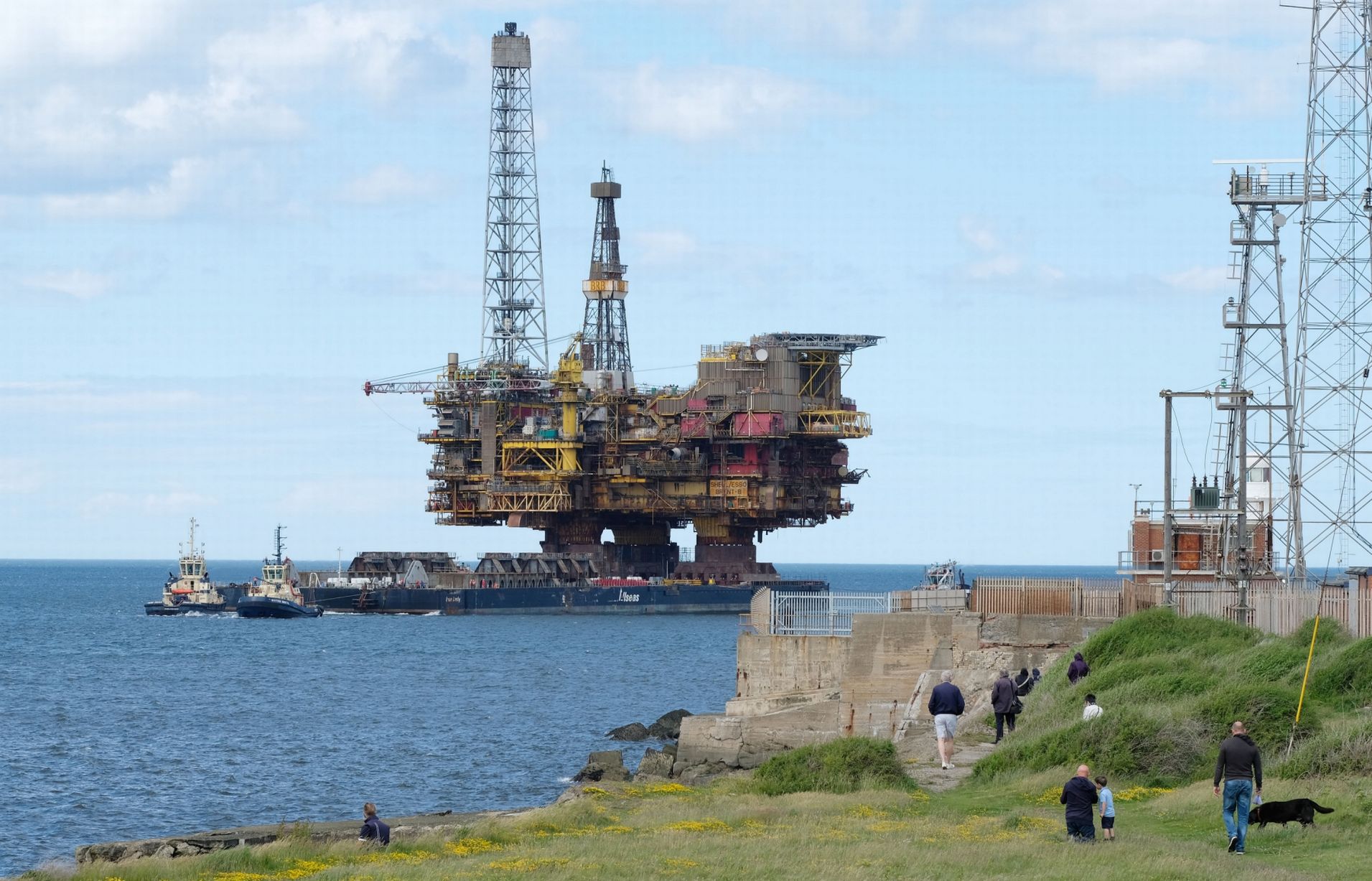
On 14 October, Greenpeace activists tackled two oil platforms of the multinational Shell in British waters of the North Sea. The photographs broadcast by Greenpeace show two Protestants hanging over a gigantic herrumbrose structure left in the sea with a large banner that reads: “Shell, clean up your garbage!”
The company confirmed that the activists invaded two platforms of the Brent Oil Zone that have already been exhausted and abandoned, the Brent Alpha platform that is still complete and the upper structures dismantled, but still have the feet of concrete standing.
Earlier today, Greenpeace activists boarded two oil platforms in Shell's Brent field to protest company plans to leave parts of their old structures containing 11,000 tons of oil in the North Sea. #shellmustfall
— Greenpeace (@Greenpeace) October 14, 2019
Join the movement to end the age of oil >> https://t.co/Cz7oqptQc6
The Brent area, half-exploited by Royal Dutch Shell and Exxon Mobile, one of the largest oil producers in the world, in eastern Shetland Islands, has been giving away oil and gas for 40 years, and for something, one of the oil standards is called Brent. The four platforms that make up the space, with its 150 sources and lots of submarine platforms, reached 500,000 barrels a day in the most prosperous time, in the 1980s.
When the fats and gases that the underwater bottom carried in the stomach have been exhausted, at least susceptible to being exploited in a cost-effective way with current technologies, the time has come to demolish and relocate these jigging towers anchored in the center of the North Sea... and the comedies have begun there.
Shell intends to abandon the large concrete bases of the four platforms, which will permanently house 640,000 cubic meters of oily water, 40,000 cubic meters of grasion sand and 11,000 tons of oil. This proposal would run counter to the decisions of the OSPAR Committee, which regulates the North Sea oil industry in 1998, banning abandonment at sea. Shell has asked the British Government to "exempt" Brent platforms, Obama said.
For Greenpeace representatives, “Shell’s plans are scandalous and violate international environmental protection treaties. Now that the climate emergency, the loss of biodiversity and the extinction of species are getting worse, more than ever it is necessary for the seas to remain in good health. If thousands of tons of oil are left in the old concrete structures, sooner or later they will contaminate the sea.”
The British showed for the first time in 1965 that drilling at the bottom of the North Sea allowed the exploitation of oil and gas. In 1969, more graves were found in Norwegian waters and sources began to increase. The oil crisis of 1973 caused its price to be four times higher and the crisis of 1979 again tripled, making the expensive and costly process of obtaining fuel in a very harsh sea profitable.
More countries, in addition to England, Scotland and Norway, had opened their pitches in search of black gold: Denmark, Germany, Netherlands... The area that brings the world’s most marine platforms to become the North Sea in 2015, with a total of 173.Debido remote access to them from land and the inclement of time, helicopters adapted to the 750,000 square kilometers that make up the space go through without interruption each year, transporting two million dry workers to platforms. Aberdeen Airport in Scotland is used by about 500,000 such passengers. Brent has been the most fertile point in the region.

Concrete coffins between waves
Just four days after the environmental protests, the 15 countries that signed the OSPAR pact met behind closed doors to decide what to do with the concrete posts of the Brent Bravo, Charlie and Delta towers. The press, which specialises in energy matters, has ensured that Shell's intention to allow access to energy was discussed in the United Kingdom.
The first to object publicly was the German Government, followed by the Netherlands and Denmark, and then the European Union (EU) joined in that position. Basically, governments have endorsed the concerns raised by Shell’s proposal among many experts.
On the one hand, the maintenance of posts of 140 meters depth of concrete after dismantling the structures of the surface of the platforms would pose a risk for the traffic of boats, although the concern for the products found within these gigantic structures is even greater. Each leg weighs approximately 300,000 tons, and inside it has 64 oil storage rooms over 50 meters each, within which there are about 11,000 tons of oil left.
Shell says this oil is well stabilized in sand and water, and it's deposited in a one-meter thick concrete wall, so that this concrete will break down for centuries. Reporter Allister Thomas summarizes in Energy Voice the chronicle “Not an easy solution for the Shellen Brent area” that the other options would be very expensive and tiring, such as taking oil out of a beton structure at 120 depths without dumping into the sea, or through biological agents that do not yet have technical guarantees (fungi, bacteria...).
The only possibility, therefore, would remain in the company: to leave in it these large structures, because if pollutants were to be poured out of the structures, their damage could not deteriorate “a much wider field than the one that has already contaminated these platforms in their activity”. First of all – here is the key of the argument – the costs and risks of dismantling, disembarking and leaving in a warehouse those huge chunks of beton would be much greater than what it would mean to leave them in the environment.
“The problem with these structures – says Thomas, a specialist in the fuel industry – is that when they were built in 1970, no one thought that they would one day be dissolved. They have long since begun to demand from companies how they will demolish the platforms when granting permits to exploit oil.”
The shortage of energy in Brent has demonstrated to Europeans that fuel consumption not only contributes to the development of the climate, but that these fuels that are consumed so massively are not so cheap, but that they lead to hidden away the huge costs given to bottom generations in backward pollution.
Some experts, based on the case of Brent, point out as a solution the legal imposition of the perpetual liability of the oil company for risks. But who would pay for the damage tomorrow if Shell goes bankrupt?
(Greenpeace occupies the Brent platform in 1995 because Shell was already throwing trash into the sea)
Environmental activist Mikel Álvarez has produced an exhaustive critical report on the wind macro-power plants that Repsol and Endesa intend to build in the vicinity of Arano and Hernani of the region. In his opinion, this is "the largest infrastructure of this kind that is... [+]
Recently we have had other arguments to convince us of the need for macro-projects in the surroundings of Euskal Herria. An example of this was the article published on the website of the EHNE of Bizkaia to one of the participants of the Ecosocial Jump initiative: "For... [+]
On 3 September the Official Bulletin of Navarre published the announcement by the Government of Navarre announcing the update of the Navarre Energy Plan. This should be an important step for the future of our community, taking into account the importance of energy and its use... [+]
I don't know if we're hit by heat waves anymore, if it's a normal hypocrisy or a systemic logic, but the gap between what we know, what we say and what we do, beyond concern, surprises me, especially in a summer environment. News, research, social media interactions… constitute a... [+]
On 19 March, in the Alondero room in Zestoa, we had an interesting round table on the energy transition organized by the community and renewable energy cooperative Argiola.
The round table was entitled “Energy transition, how?” and for this purpose the organizers invited... [+]
"Elite ekonomiko baten pribilegioak iraunarazten diren aldi berean, konponbide faltsuak eskaintzen dizkigute, egiazko konponbideek beharko luketena onartu gabe: oligarkia energetikoa erabat auzitan jartzea, hazkunde ekonomikoaren aginduarekin haustea, gure eredu produktibo... [+]












